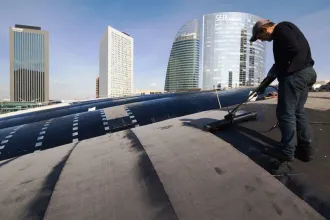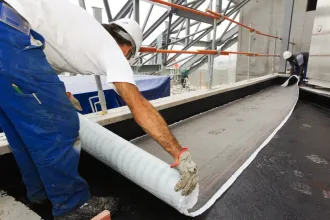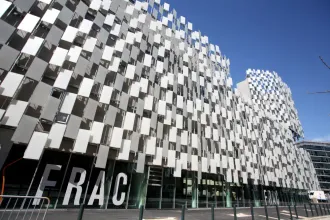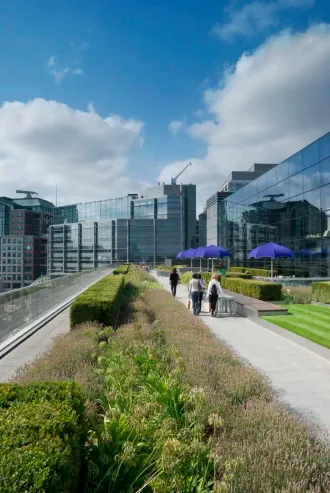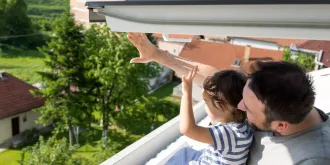Our country pages
Africa
Europe
Search
The Toulon Opera, an exceptional project

An ambitious renovation
A new roof and additional space
The challenges
The Toulon Opera House is housed in a 19th century building, right in the heart of the city. The roof had never been renovated since the inauguration of the building in October 1862 and the situation was becoming critical, especially with leaks appearing on the sets.
The challenge for this project was two-fold: repair the roof and assist in the arrangement of a rehearsal room in the attic (not used to date).
Several constraints absolutely had to be taken into account to respect the specificity of the place:
- Structural constraint: the historic “Eiffel” type metal structure could not support more than 200 kg/m² of load on the attic floor and no more than 20 kg/m² on the roof compared to the existing solution
- Thermal stress: it was necessary to significantly improve the thermal balance of the building while respecting the load constraints at the level of the roof
- Acoustic constraint: each detail, up to the tiniest screw, had to be installed in a thoughtful way to minimize the transmission of vibrations and respect the acoustics of the site
- Historical and aesthetic constraint: the visible part of the roof had to be identical to the historical roof
Jump to section
The solutions
To respond to the constraints of the building as a heritage site, we proposed the use of our “Marseille” tile, a historic “mechanical” tile which offers wide flexibility of implementation thanks to its variable exposure. The historic tiles of the building already were “Marseille” tiles and the tile factory which manufactured them in the 19th century (Guichard Carvin & Cie) is one of the tile factories which ended up forming the Monier Group. We therefore had complete historical continuity.
For the insulation of the attics in terms of their arrangement, we proposed the use of our Clima Comfort® solution, a Sarking panel with integrated under-roof screen from our Thermazone range (the 140 mm version was used here). With R=6.36 m²K/W for only 5 kg/m², it was a perfect ETI solution to respect the structural constraints of the location while improving the thermal performance of the building.
As far the acoustics were concerned, our teams worked in close collaboration with the curator of the Opera, the acoustic design office and the architect so that the screws holding the Sarking in place are distributed in such a way as to reduce the transmission of vibrations.
Toulon Opera
Project Highlights
Project Highlights
- Contracting authority: Toulon Provence Méditerranée communauté d’agglomération
- General contractor: Groupement Leccia / Cazorla architectes DPLG
- Roofer: SAS Alain Le Ny
- BMI Monier solutions: Marseille Red tiles, Clima Comfort® 140 mm and accessories (ridge tiles, socket tiles and roof vents, Europanneton® Marseillle stainless steel fastenings, closures: Figaroll® Plus)
- Area and volumes: 11,400 “Marseille” tiles spread over 770 m² and 150 Clima Confort® panels
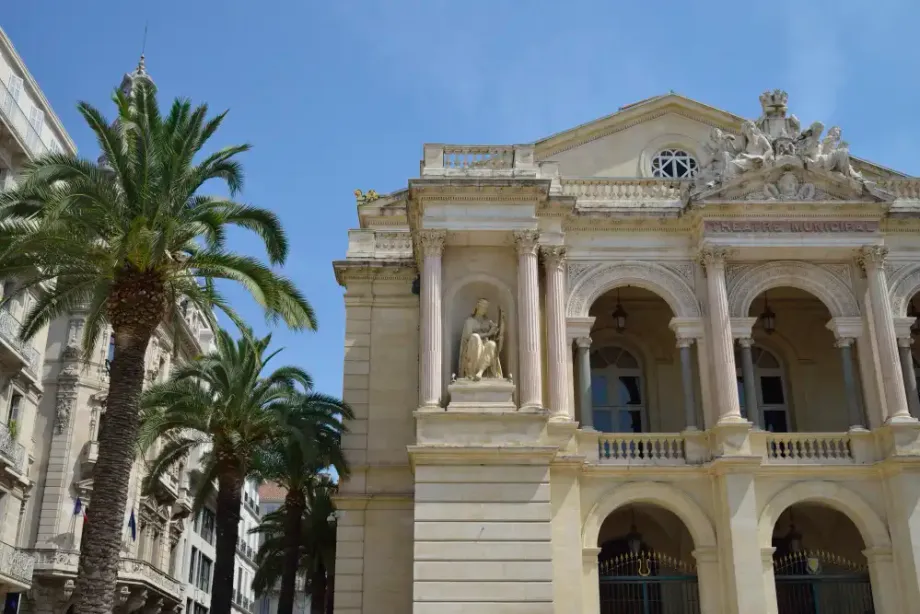
Marseillaise clay
Origins
For thousands of years, man has modelled and baked clay in order to produce everyday objects for use in the home. References to the production of Marseillaise clay roof tiles and bricks can be found dating back to more than a century BC.
19th century
In the mid-19th century, Marseillaise craftsmen were pioneers in the gradual industrialisation of their production. In 1894, three local roof tile producers (the brothers Roux, Pierre Sacoman and Etienne Arnaud & Cie) decided to combine their know-how and create the "Société Générale des Tuileries de Marseille" (SGTM).
The end of the 20th century
In 1973, the SGTM merged with the Société des Tuileries de la Méditerranée and adopted the name of "Tuilerie de Marseille et de la Méditerranée". In 1987, the Rastoin and Zarifi families sold the majority share to Générale de Céramique. Then in 1989, the company came under the control of Saint-Gobain/Coverland before becoming part of the roof division of the Lafarge group in 1998.
From 2008 onwards
The Monier era began in 2008 with the sale of the roof division by Lafarge. The Marseille roof tile factory is one of 4 brick factories of Monier France. Monier, a pioneer in the development of complete systems, is a leader brand in the field.
Provence clay: a strictly ecological operation
Most of the clay used to manufacture the roof tiles is produced in Marseille and comes from our quarry in Puyloubier, at the foot of the Sainte-Victoire Mountain. We are highly attentive to protecting the natural environment surrounding our quarries and endeavour to protect animal and plant species and restore the sites following extraction.
Read our articles
Contact Us
Contact our local team
We can support you to define solutions and services for specific country.
Media Contact
Contact us for more information on BMI Group
group.communications@bmigroup.com


